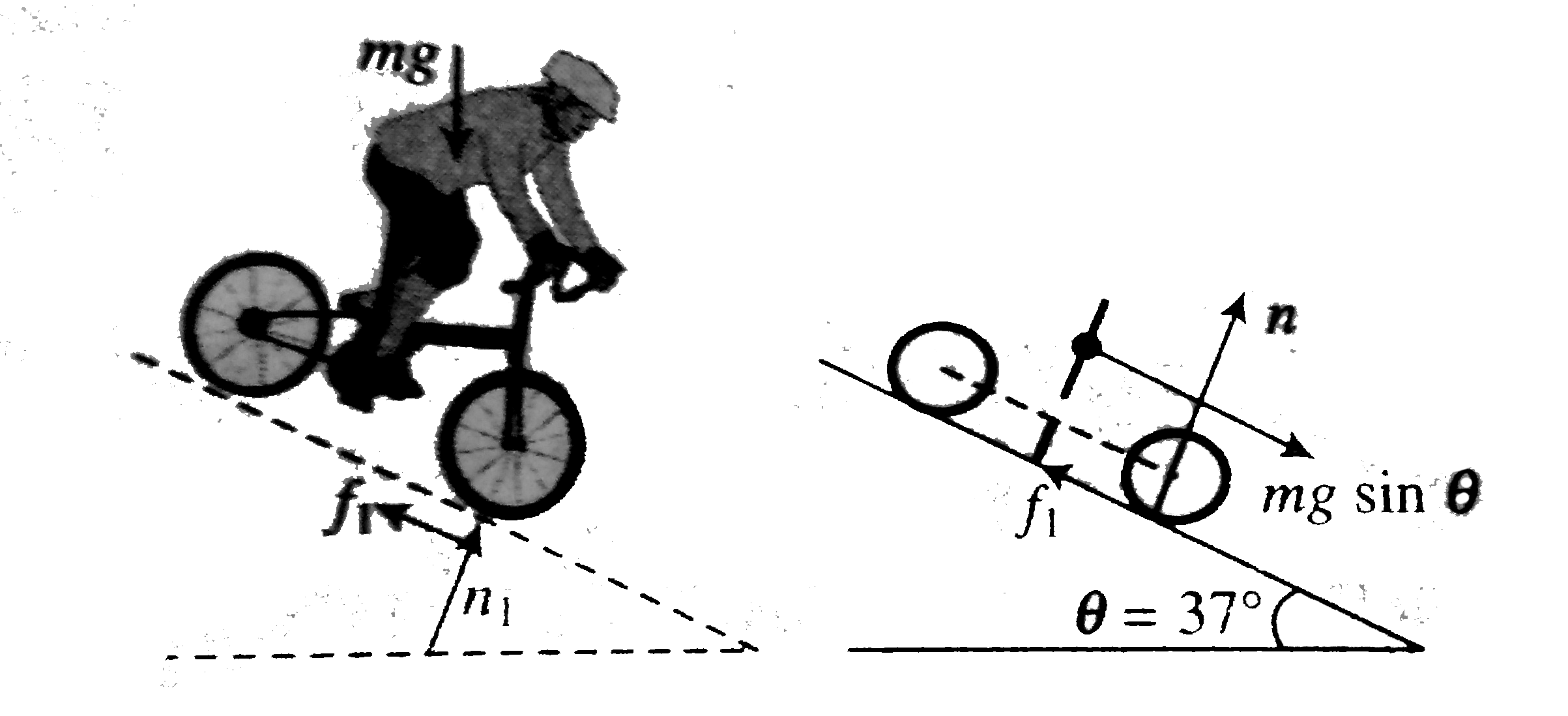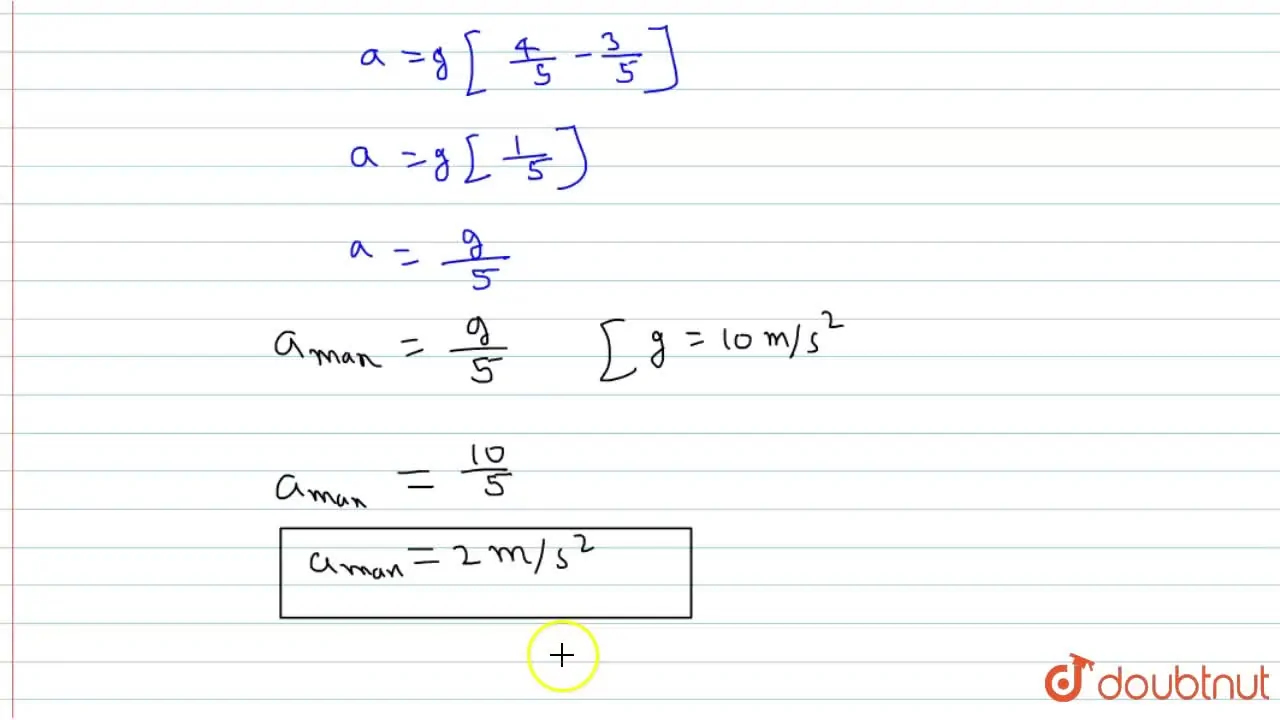A bicycle is traveling downhill at a high speed. Suddenly, the cyclist sees that a bridge ahead has collapsed, so she has to stop. What is the maximum magnitude of acceleration the bicycle can have if it is not to flip over its front wheel—in particular, if its rear wheel is not to leave the ground? The slope makes an angle of 37∘ with the horizontal. On level ground, the centre of mass of the woman–bicycle system is at a point 1.0m above the ground, 1.0m horizontally behind the axle of the front wheel, and 35.0 cm in front of the rear axle. Assume that the tires do not skid.
For stoping the cyclist should retard i.e, acceleration should be in the direction up the sloping surface. When the cyclist is one the point of tipping over forward, the normal force on the rear wheel is zero. Parallel to the plane we have f1−mgsinθ=ma. Perpendicular to the plane n1−mgcosθ=0. Torque about the centre of mass

f1(1.0m)=n1(1.0m) or f1=n1
From above equation we get a=−2ms−2.
Related Playlists
- BOOK - CENGAGE PHYSICS ENGLISHCHAPTER - RIGID BODY DYNAMICS 1EXERCISE - Exercise 2.411videos
RIGID BODY DYNAMICS 1
- BOOK - CENGAGE PHYSICS ENGLISHCHAPTER - RIGID BODY DYNAMICS 1EXERCISE - Subjective13videos
RIGID BODY DYNAMICS 1
- BOOK - CENGAGE PHYSICS ENGLISHCHAPTER - RIGID BODY DYNAMICS 1EXERCISE - Exercise 2.217videos
RIGID BODY DYNAMICS 1
- BOOK - CENGAGE PHYSICS ENGLISHCHAPTER - PROPERTIES OF SOLIDS AND FLUIDSEXERCISE - INTEGER_TYPE2videos
PROPERTIES OF SOLIDS AND FLUIDS
- BOOK - CENGAGE PHYSICS ENGLISHCHAPTER - RIGID BODY DYNAMICS 2EXERCISE - Interger2videos
RIGID BODY DYNAMICS 2
Similar Questions
State the types of motion of the wheel of a bicycle
View SolutionA particle of mass m is projected with velocity making an angle of 45∘ with the horizontal When the particle lands on the level ground the magnitude of the change in its momentum will be .
View SolutionA particle is projected from the ground with velocity u making an angle θ with the horizontal. At half of its maximum heights,
View SolutionThe locus of the centre of a wheel of a bicycle going straight along a level road.
View SolutionA vertically straight tree, 15m high, is broken by the wind in such a way that its top just touches the ground and makes an angle of 60∘ with the ground. At what height from the ground did the tree break?
View SolutionA tree 12m high, a broken by the wind in such a way that its top touches the ground and makes an angle 600 with the ground. At what height from the bottom the tree is broken by the wind?
View SolutionA particle is projected with velocity 50 m/s at an angle 60∘ with the horizontal from the ground. The time after which its velocity will make an angle 45∘ with the horizontal is
View SolutionThe rear wheels of tank trailor have large number of wheels so that:
View SolutionWhen a car takes a round curve on a level raod at high speed, two of its wheels leave the ground. Which two remain on the ground ?
View SolutionA wheel of bicycle is rolling without slipping on a level road. The velocity of the centre of mass is vCM, then true statement is
 View Solution
View Solution


